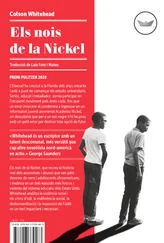“That was a very full answer.”
“Thank you, sir.”
“The standard accident curve possesses what shape?”
“The failure rate for elevators is expressed by RT equals one minus FT, where R is reliability, T is time and F is failure. The equation is characterized by a ‘bathtub’-shaped curve with three distinct phases. The initial or ‘early failure’ phase begins with a relatively high incident of accidents — mostly due to installation errors — and then drops off sharply. This is the first wall of the ‘bathtub.’ The next phase, called the ‘random failure’ phase, is a plateau and extends for the majority of the elevator’s service life. This flat plane is the bottom of the ‘bathtub.’ The accidents in this phase are unpredictable and generally result from passenger misuse or poor maintenance. It is also in this phase that the rare ‘catastrophic accident’ occurs. The curve ascends quickly again in the final, or ‘wear-out’ phase, when the elevator is past its period of prime use. The opposite wall of the bathtub. Most of these accidents can be prevented, again, by diligent inspection and careful maintenance during this crucial time. May I take a drink of water?”
“Yes. The Four Questions?”
“As put forth by Mettleheim: How did this happen? How could this happen? Is it exceptional? How will it be avoided in the future?”
“The verdict in The United States vs. Mario’s ?”
“Ruled that restaurant dumbwaiters are hand elevators and subject to scrutiny by municipal elevator inspectors, despite the fact that they do not carry human freight.”
“And the fallout?”
“Critics charged that the elevator inspector ‘cabal’ was attempting to unduly extend the scope of its jurisdiction.”
“The Sixteen?”
“Elevator, freight: an elevator used for carrying freight on which only the operator and the persons necessary for unloading and loading are permitted. Elevator, gravity: an elevator utilizing gravity to move the car. Elevator, hand: an elevator utilizing manual energy. Elevator, inclined: an elevator traveling at an angle of inclination of seventy degrees or less from the horizontal. Elevator, multideck: an elevator having two or more compartments located immediately above the other. Elevator, observation: designed to permit exterior viewing by passengers. Elevator, passenger: an elevator used primarily to carry persons other than the operator. Elevator, power: utilizing power other than gravitational or manual. Elevator, electric: a power elevator utilizing an electric driving-machine. Elevator, hydraulic: a power elevator where the energy is applied, by means of a liquid under pressure, in a cylinder. Elevator, direct-plunger hydraulic: a hydraulic elevator having a plunger or cylinder attached directly to the car frame or platform. Elevator, electro-hydraulic: a direct-plunger elevator where liquid is pumped by an electric motor. Elevator, maintained-pressure hydraulic: a direct-plunger elevator where liquid under pressure is available at all times for transfer into the cylinder. Elevator, roped-hydraulic: a hydraulic elevator having its piston connected to the car with wire ropes. Elevator, private residence: a power passenger elevator installed in a private residence or in a multiple dwelling as a means of access to a private residence. Elevator, sidewalk: a freight elevator for carrying material exclusive of automobiles and operating between a landing in a sidewalk or other area exterior to a building and floors below the sidewalk or grade level. That’s the Sixteen.”
“You’re doing very well, Miss Watson.”
“Thank you, sir.”
“We’re almost done here. Answer me this: Do you know how many colored elevator inspectors there are in this country?”
“Twelve.”
“And do you know how many are employed as such? Are not working as shoeshine boys? Or maids?”
“I don’t know. Less than twelve.”
“So you don’t know everything. That will be all, Miss Watson. You’ll receive your grade next week.”
* * *
The falling elevator’s wake is sparks, thousands of them, raking the darkness all the way down.
* * *
The address is 117 Second Avenue but everyone knows it as Intuitionist House. Edward Dipth-Watney, two-time winner of the Werner von Siemens Award for Outstanding Work in Elevator Innovation (first for his Flyboy limit switch, the second time for the “smart” overspeed governor), purchased the townhouse two decades ago, when the movement was still the soiled stepchild. The elevator community regarded Edward Dipth-Watney as a man of quixotic temperament; while not entirely swayed by Intuitionism, he felt that anything that caused such bellowing and recrimination merited a place to germinate and unfold itself, and hopefully cause more bellowing and recrimination. He was also a well-known model train enthusiast.
Edward Dipth-Watney’s achievements were, and still are, appreciated; his name will maunder about the indexes of elevator inspector textbooks until the end of time. One snapshot: Arbo Elevator Co., the fortunate licensees of Dipth-Watney’s Flyboy limit switch, dipping the prototype in gold and bestowing it upon its inventor as a Christmas gift one cold year. Edward Dipth-Watney was not interested in the gilded privileges of fame, however. The longevity of Fulton’s science was uncertain; nonetheless, Dipth-Watney reasoned, if God had given him a gift, the least he could do was to help others find theirs. It was this same faith in God’s will that prevented Edward Dipth-Watney from witnessing the results of his efforts on behalf of the international Intuitionist brotherhood. He believed the cyst on his neck to be another of His gifts, a reminder against vanity. He was incorrect.
In the years following its benefactor’s death, the House thrived into the international headquarters of Intuitionism, continuing to stubbornly prosper even after Institute administrations reversed themselves, offered classes on the new science and even bestowed large (although not well-situated) offices upon its intrepid instructors. Very little actual research goes on at the House, but burning midnight oil was never the building’s intended purpose. Inspectors and theoreticians of elevators are still social creatures despite the toll their profession exacts on their souls. Every Tuesday, James Fulton (and later, Orville Lever) stood in the downstairs drawing room and lectured on the intricacies of his science. Lectured on the implications of European maintenance deviations on Intuitionism, expounded on the gloom of the shaft and how it does not merely echo the gloom inside every living creature, but duplicates it perfectly. Afterward there were mint juleps for everyone, and still later, after Fulton had retired to his Tudor-style house on the Institute for Vertical Transport’s north campus, Swedish films featuring large-breasted volleyball players. Fulton was unaware of this dubious activity; the House chauffeur regularly packed the Tuesday night lectures with traveling salesmen who were in search of a good time and willing to pay for it. Fulton, if he ever wondered about it, probably took his lay audience as evidence of the universal applicability of his theories.
Ever since Lever replaced Fulton as the man of the House, the importance of 117 Second Avenue has trebled in the hearts and minds of the global Intuitionist tribe. It is now his campaign headquarters and home to a formidable optimism new to these generally sullen detective-philosophers of vertical transport. The new rumors have invigorated; the conventional wisdom whispers that Lever has a genuine chance of winning the election for Guild Chair. Their time has come, as they knew it would. Lever’s Tuesday night lectures no longer linger haughtily over the errata of nuts-and-bolts Empiricism, but excoriate. The House walls vibrate with the sibilants of campaign rhetoric. If he wins, the House will change forever.
Читать дальше












